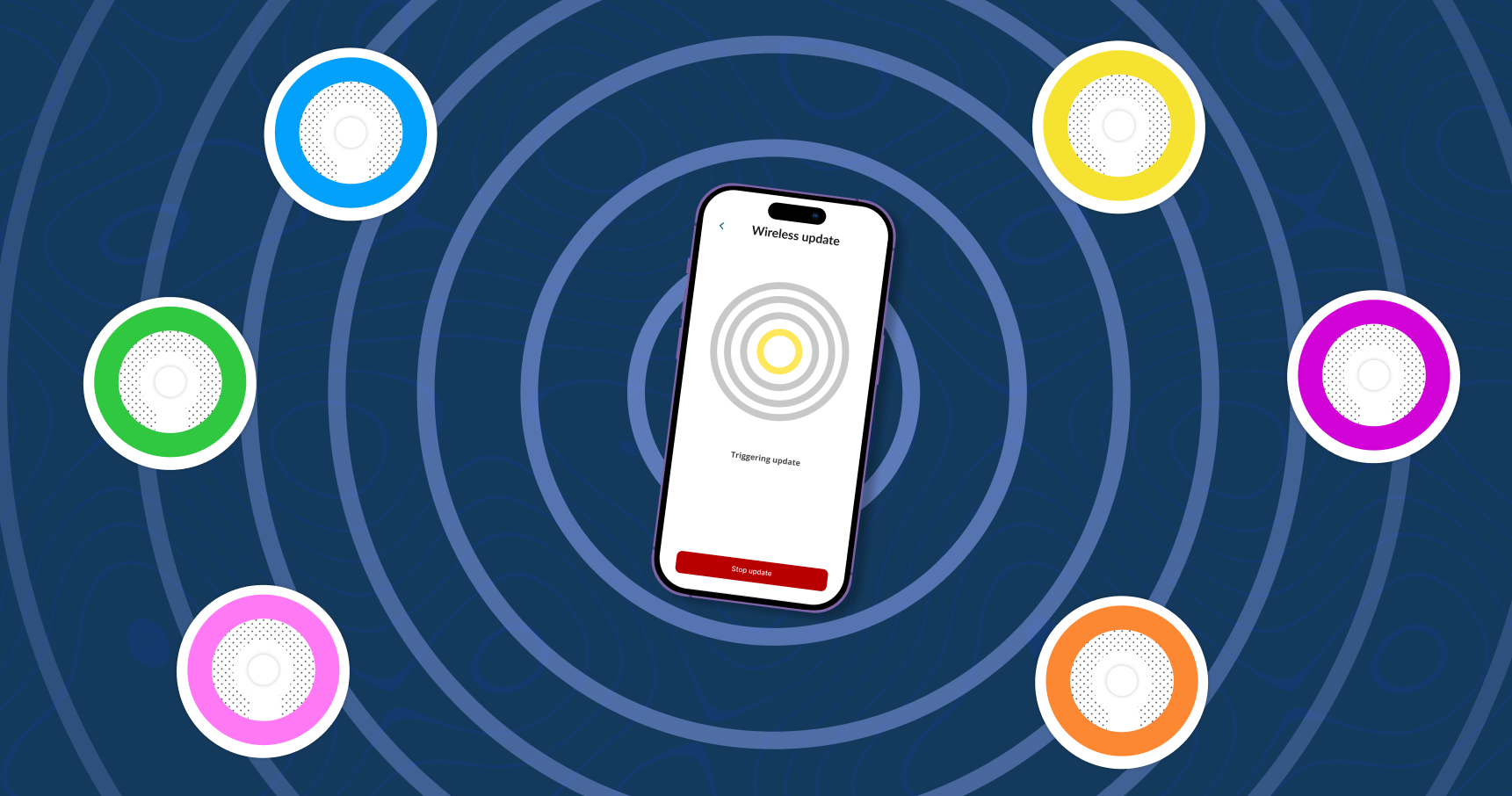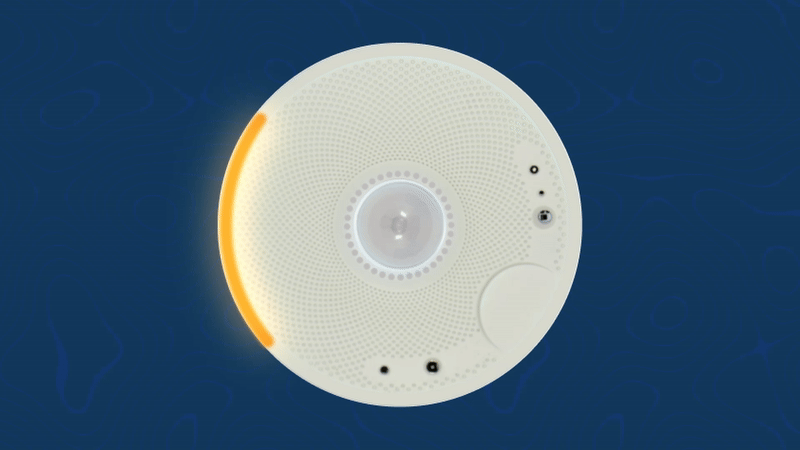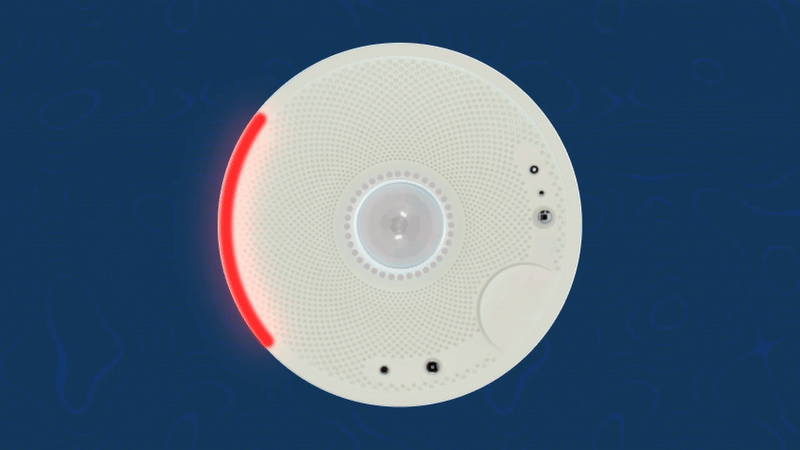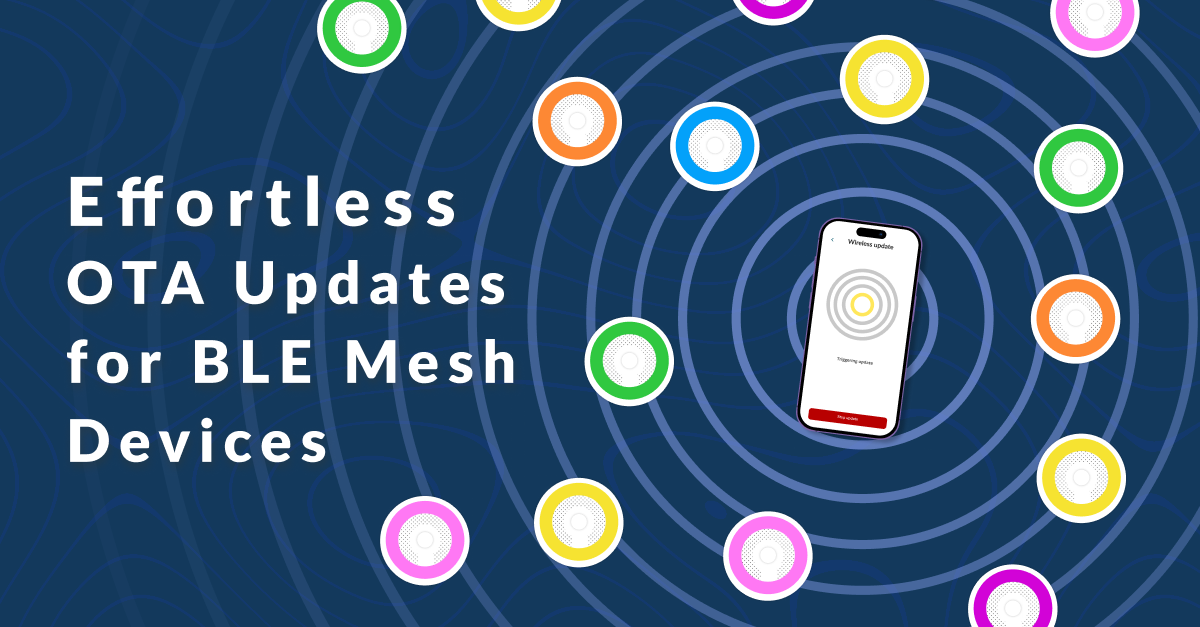Sauter introduced the Smart Sensor viaSens - an Internet of Things device that transcends conventional sensing capabilities and takes monitoring to the next level. By tracking key parameters such as temperature, humidity, air quality, motion, brightness and sound pressure level, the Smart Sensor provides invaluable data. This wealth of information is harnessed to empower automation and control systems, resulting in smarter and more responsive office spaces that cater to users' needs. This product is the result of a great collaboration with our Swiss-based partner SAUTER, a premier Smart Building Automation manufacturer with a global presence.
What sets this device apart is its incorporation of BLE Mesh technology, facilitating seamless communication among devices. The Smart Sensor isn't just a leap forward in sensor technology; it's a game-changer in creating interconnected, intelligent ecosystems for enhanced workplace experiences.

BLE Mesh
Bluetooth Low Energy (BLE) Mesh is a communication protocol crafted specifically for Internet of Things (IoT) devices. This protocol extends the capabilities of traditional Bluetooth Low Energy, paving the way for the creation of expansive, reliable, and secure networks. Unlike traditional point-to-point Bluetooth connections, BLE Mesh allows devices to form a mesh network, enabling data to flow seamlessly through the network, extending both the range and the overall coverage.
Key features of BLE Mesh include low power consumption, robust, mandatory security mechanisms, and strict adherence to Bluetooth SIG standards. These qualities collectively make BLE Mesh a powerful solution for constructing interconnected wireless networks, opening new possibilities for diverse IoT applications.
Within this network topology, we employ a sophisticated structure featuring a primary node known as the gateway, alongside up to 15 interconnected nodes that communicate through Mesh technology. The gateway plays a pivotal role as it acts as the bridge connecting the sensor nodes in the network to the vast realm of the Internet. It stands out with its MQTT capabilities, assuming responsibility for the subsequent transfer of data.
Each node in this intricate setup serves a unique purpose - collecting valuable data and establishing communication channels with the gateway. Direct communication occurs if nodes are within range, while a relay node facilitates communication when direct interaction is not feasible. This strategic architecture ensures efficient data flow and a robust network, exemplifying the power and versatility of the BLE Mesh network design.

Wireless (OTA) Update
Over-the-air (OTA) update represents the wireless delivery of new firmware to embedded devices. This transformative technology empowers manufacturers and developers to enhance device functionality, address bugs, and fortify security - all without the need for physical access to the device.
In a landscape where thousands of Smart Sensor devices adorn ceilings within a single building, the impracticality of manual physical updates is evident. The wireless update approach not only streamlines maintenance but also minimizes downtime, contributing to an enhanced overall user experience.
However, implementing this feature posed a challenge as only the gateway had fast Ethernet connectivity, leaving other devices without direct access. The key question was how to initiate updates. Despite the nodes lacking Ethernet connectivity, a clever solution emerged - upon receiving a trigger, the BLE mesh nodes could activate their Wi-Fi capabilities. Leveraging their additional functionality of iBeacon advertising and scanning, we opted for a custom-made iBeacon packet as the trigger. A mobile app then became the initiator, serving as the primary source for the new firmware and orchestrating the entire OTA update process temporarily over WiFi.

iBeacon
iBeacon is a location-based service pioneered by Apple that harnesses Bluetooth Low Energy (BLE) for proximity sensing, indoor navigation, and context-aware applications.
The iBeacon packet format usually consists of three integral components: UUID, Major and Minor values. When combined, these components form a unique identifier for each iBeacon. As a Bluetooth device enters the range of an iBeacon, it interprets the UUID, Major and Minor values, enabling applications to trigger location-specific actions or provide context-aware information to the user, as SAUTER uses it for Mobile Building Services.
The Smart Sensor also integrates iBeacon technology, allowing users to enable or disable iBeacon advertising. But regardless of the advertising status, iBeacon scanning on the device is always active to receive the initiating OTA updated trigger.
Mobile Application
In collaboration with Sauter, we designated the mobile app as the central hub provisioning the sensor network and the primary initiator performing the OTA updates. Functioning as a server housing the latest firmware versions in binary files and also as a mobile hotspot with a predefined SSID and password, it allows sending triggers and facilitating the OTA process on the devices.
Within the app, users first need to select the Mesh network for updating nodes and then choose the firmware version they would like the devices to update to. Users have the flexibility to choose any available version, with the caveat that updates will only occur when transitioning to higher firmware versions than those currently on the device.
Upon making these selections, the app prompts users to enable the mobile hotspot with a predefined SSID and password. Clear instructions for enabling the hotspot are provided for both Android and iOS users. Once the hotspot is active, the app starts broadcasting the beacon packet. This signal triggers the OTA update on devices within range and of interest. Upon receiving the beacon signal, the Smart Sensor undergoes a series of checks. The update will only proceed if the received network ID matches the one under which the device was provisioned, the firmware version is higher than the current one, and the hardware index aligns with the device's hardware index. Subsequently, the device activates WiFi, establishing a communication link with the server. After starting the OTA update the Smart Sensor will display appropriate animation and reboot.

Fallback Mechanism
When the OTA update is initiated, the device temporarily halts all its regular functionalities to ensure a smooth and uninterrupted update process. In the rare event that an issue arises during the update, a safety mechanism is activated by triggering a safe reboot, effectively reverting the Smart Sensor to the previous firmware version.
To provide users with visual feedback in case of an unsuccessful update, a distinctive animation would be displayed. This serves as a clear indicator, enabling users to promptly identify and address any issues that may have occurred during the update process. If everything goes smoothly, the Smart Sensor viaSens reboots with the new firmware.

Embedded Software Developer
If you like this article, we're sure you'll love these!
Smart Sensor - Case Study
Read all about how we reinvented the Smart Building Industry using our IOT, design and development expertise.
Decentralized Stable Coins
Explore MakerDAO's impact on DeFi and stablecoins, ensuring DAI's stability and robust governance.
